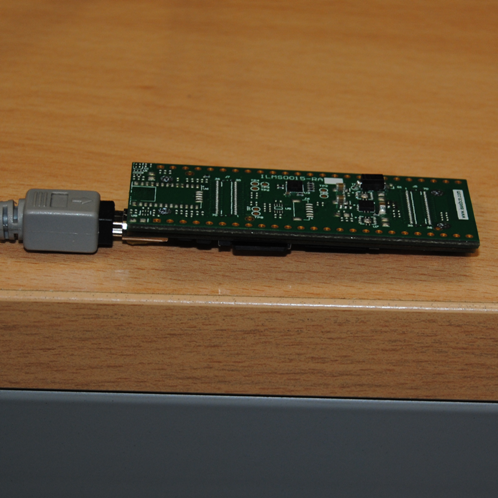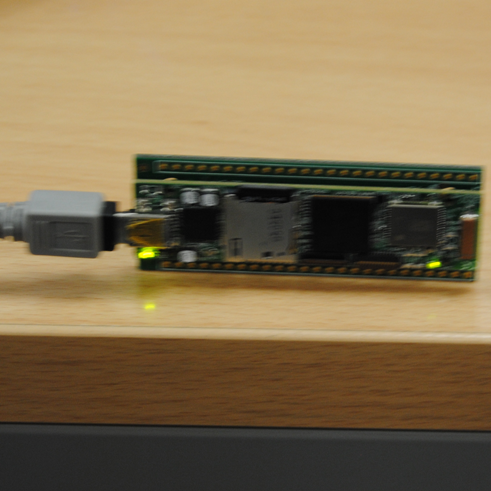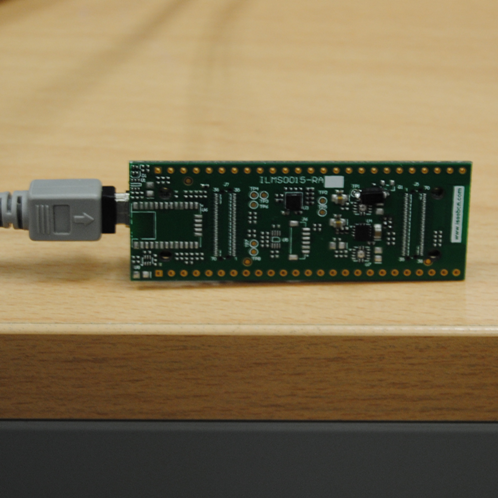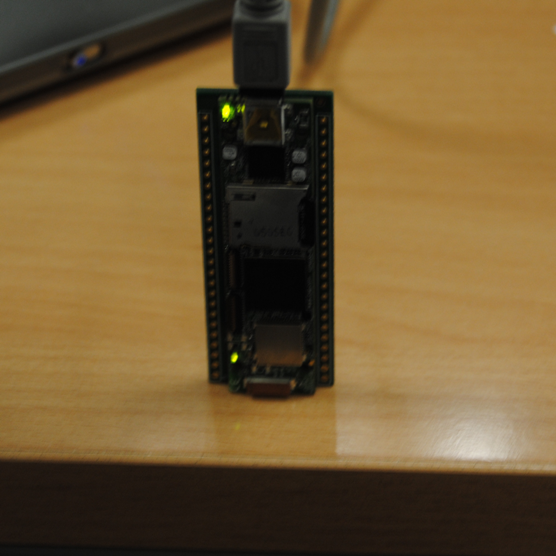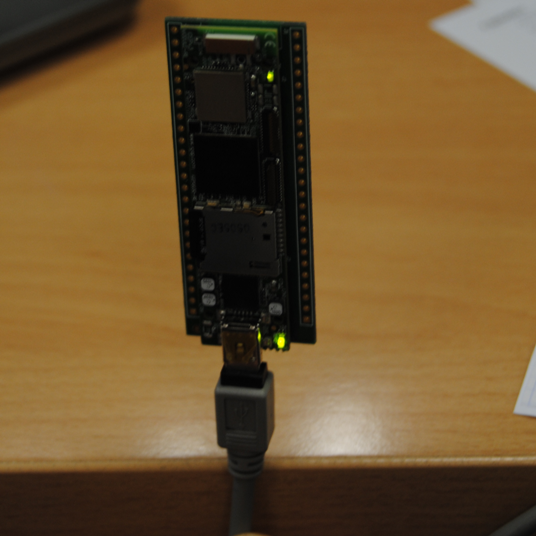How to use SPI
From IGEP - ISEE Wiki
Contents
Overview
This How-To is meant to be a starting point for people to learn use SPI for IGEP devices as quickly and easily as possible. In this how-to, we run an example program that reads and writes registers from 3-axis accelerometer (LIS3DH) included on the board IGEP New York.
Requirements
There are some requisites to follow this guide:
- IGEP SDK VM: follow the IGEP SDK SOFTWARE USER MANUAL (chapter 2.3 "Setting up and running the VM")
- IGEP Firmware: follow the IGEP SDK SOFTWARE USER MANUAL (chapter 6.1 "Create IGEP firmware bootable micro-sd card")
- IGEP COM MODULE and IGEP NEW YORK
- SPI example program
- MicroSD Card (at least 2Gbytes)
How Works
LIS3DH accelerometer: It is the accelerometer mounted in IGEP New York.
Omap3 SPI Peripheral: It is the hardware used to communicated with accelerometer and other SPI devices.
Omap2_mcspi: It is a bus driver than controls Omap3 SPI Peripheral.
Spi: It is a protocol driver that defines functions and strucs used in SPI bus.
Spidev: It is a device driver that export spi driver functionalities to userspace.
Lis3lv02d_spi: SPI glue layer for lis3lv02d
Lis31v02d: Device driver for LIS3DH accelerometer.
Exp_ilms0015: It is a startup program for IGEP New York. It attach lis31v02d with Spi driver.
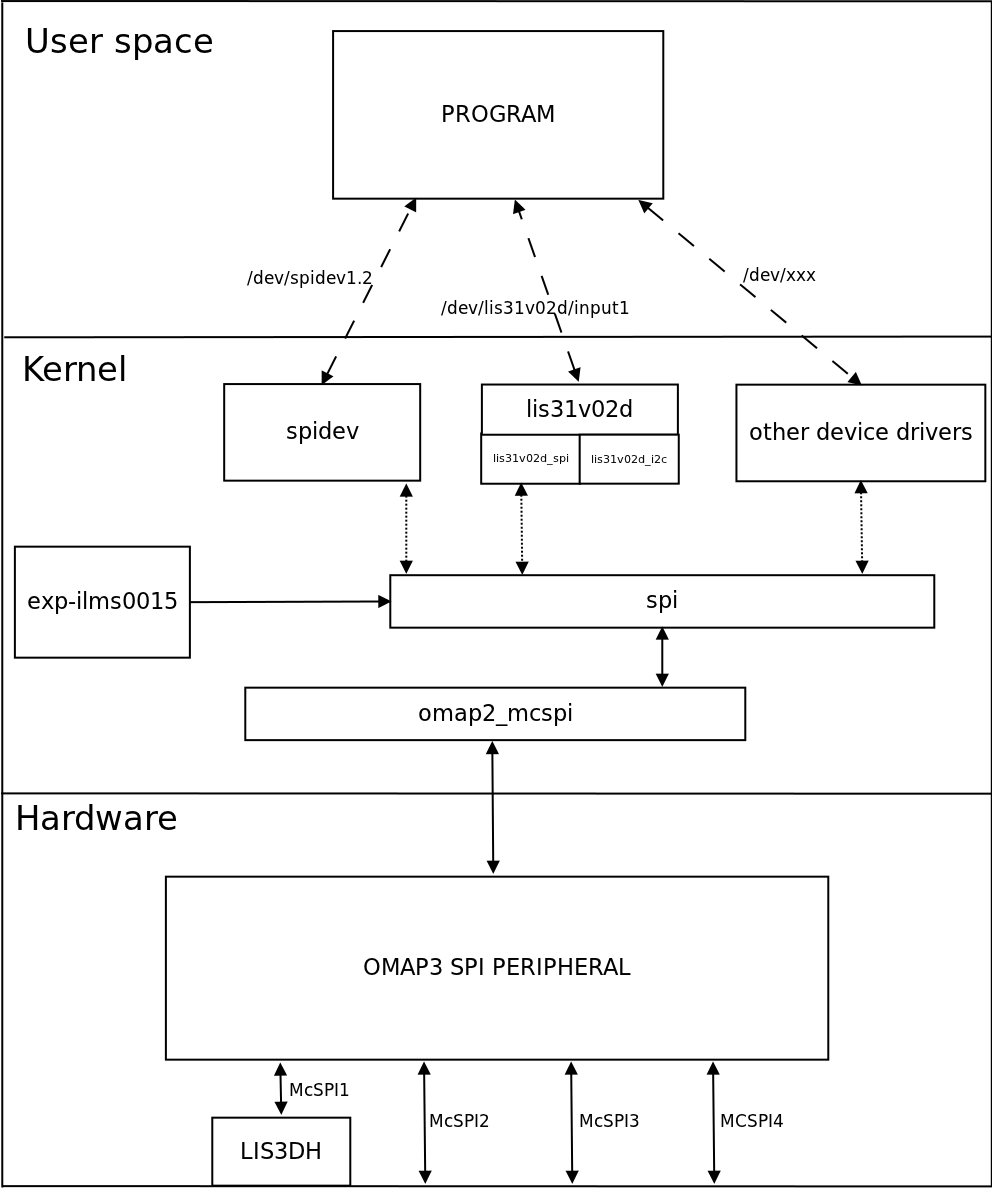
|
More information about Linux Kernel SPI at:
Prepare Micro SD Card
Generate Micro SD Card
Open a terminal and use the following steps to download and generate a Micro SD card.
wget http://downloads.isee.biz/denzil/binary/igep_firmware-yocto-1.2.1-1.tar.bz2 tar jxf igep_firmware-yocto-*.tar.bz2 cd igep_firmware-yocto-*
Insert a SD-Card and use the igep-media-create script to copy the firmware.
./igep-media-create -–mmc <mmc> --image demo-image-sato-igep00x0.tar.bz2 --machine igep0030
where <mmc> - is the SD-Card device of your computer. For example, assuming the SD-card device takes '/dev/sdb' type:
./igep-media-create --mmc /dev/sdb --machine igep0030 --image demo-image-sato-igep00x0.tar.bz2
This should give you a bootable SD-card with IGEP COM MODULE support.
Custom Micro SD Card
Get Linux kernel sources
We will get from git repository the kernel sources:
- Clone the Kernel git repository
jdoe@ubuntu ~ $ git clone git://git.igep.es/pub/scm/linux-omap-2.6.git jdoe@ubuntu ~ $ cd linux-omap-2.6/
- Checkout your desired branch (we used for this howto 2.6.37.y)
jdoe@ubuntu ~/linux-omap-2.6 $ git checkout origin/linux-2.6.37.y -b linux-2-6-37.y
Modify Linux Kernel Sources to attach Spidev to SPI driver
To read accelerometer registers from spidev, we need to attach spidev driver to spi driver at start up. So it is necessary to modify spi_board.
Go to $(Kernel path)/arch/arm/mach-omap2/exp-ilms0015.c and edit the next fields in bold words.
|
static struct spi_board_info lis3lv02d_spi_board_info __initdata = { .modalias = "spidev", //.modalias = "lis3lv02d_spi", .bus_num = -EINVAL, .chip_select = -EINVAL, .max_speed_hz = 1*1000*1000, .irq = -EINVAL, .mode = SPI_MODE_0, //.platform_data = &lis3lv02d_pdata, }; inline void __init ilms0015_lis3lv02d_init(int bus_num, int cs, int irq) { struct spi_board_info *spi = &lis3lv02d_spi_board_info; if ((gpio_request(irq, "LIS3LV02D IRQ") == 0) && (gpio_direction_input(irq) == 0)) gpio_export(irq, 0); else { pr_err("IGEP: Could not obtain gpio LIS3LV02D IRQ\n"); return; } spi->bus_num = bus_num; spi->chip_select = cs; spi->irq = OMAP_GPIO_IRQ(irq), spi_register_board_info(&lis3lv02d_spi_board_info, 1); } ... void __init ilms0015_init(void) { mux_partition = omap_mux_get("core"); /* Mux initialitzation for ilms0015 */ omap_mux_write_array(mux_partition, ilms0015_mux); /* 3-axis accelerometer */ ilms0015_lis3lv02d_init(1, 2, 174); /* Export some GPIO */ ilms0015_gpio_init(); } |
Now spi_register_board_info has all information necessary to attach spidev driver instead lis3lv02d_spi.
Compile Kernel
Export IGEP SDK sources
jdoe@ubuntu ~ $ source /opt/poky/1.2/environment-setup-armv7a-vfp-neon-poky-linux-gnueabi
- Configure the kernel
jdoe@ubuntu ~ $ cd linux-omap-2.6/ jdoe@ubuntu ~/linux-omap-2.6 $ make ARCH=arm CROSS_COMPILE=arm-poky-linux-gnueabi- igep00x0_defconfig
- Build the kernel and Modules
jdoe@ubuntu ~/linux-omap-2.6 $ make ARCH=arm CROSS_COMPILE=arm-poky-linux-gnueabi- zImage modules
Copy Kernel to SD card
- Kernel binary resides inside the directory:$(Kernel path)/arch/arm/boot/zImage. Copy binary to SD boot partition:
jdoe@ubuntu ~/linux-omap-2.6 $ mv arch/arm/boot/zImage /media/boot/zImage
- Copy Kernel modules:
jdoe@ubuntu ~/linux-omap-2.6 $ sudo make ARCH=arm modules_install INSTALL_MOD_PATH=/media/rootfs
Enable ilms0015 support
By default, igep-media-create ,configured as igep0030, gives support only for IGEP Expansions Paris and Berlin. We need to configure igep.ini (located at boot partition) and gives support to IGEP New York:
| ; Machine configuration
;buddy=base0010 buddy.revision=B buddy=ilms0015 |
NOTE: “ilms0015” is the technical name of IGEP New York.
Test changes
Once you copy your new Kernel binaries and edit igep.ini:
- Power up your board with your new SD card
- Enable removable device: RNDIS/Ethernet Gadget
- Set up usb0 network device:
jdoe@ubuntu ~ $ sudo ifup usb0
jdoe@ubuntu ~ $ ifconfig usb0
usb0 Link encap:Ethernet HWaddr 32:3a:b0:bc:cc:15
inet addr:192.168.7.10 Bcast:192.168.7.255 Mask:255.255.255.0
inet6 addr: fe80::303a:b0ff:febc:cc15/64 Scope:Link
UP BROADCAST RUNNING MULTICAST MTU:1500 Metric:1
RX packets:53 errors:0 dropped:0 overruns:0 frame:0
TX packets:46 errors:0 dropped:0 overruns:0 carrier:0
collisions:0 txqueuelen:1000
RX bytes:10584 (10.5 KB) TX bytes:9203 (9.2 KB)
jdoe@ubuntu ~ $
Log in:
jdoe@ubuntu ~ $ ssh root@192.168.7.1 root@igep00x0:~#
Check your changes (spidev will be enabled):
root@igep00x0:~# lsmod Module Size Used by ip_tables 9402 0 rfcomm 48492 0 hidp 13271 0 l2cap 48548 4 rfcomm,hidp bluetooth 67154 3 rfcomm,hidp,l2cap option 13048 0 usb_wwan 7163 1 option libertas_sdio 13919 0 twl4030_wdt 2623 0 spidev 4906 0 libertas 98995 1 libertas_sdio omap_wdt 3171 0 usbserial 23882 2 option,usb_wwan root@igep00x0:~#
“spidev1.2”: refers at McSPI1 bus 2. Now we can communicate to accelerometer using spi driver functions.
SPI Test program
Overview
This program is based in spidev_test and it was edited to run with LIS3DH accelerometer. Program can be explained in four parts:
Connection properties: program lets change via parameters SPI configurations like: device, max speed, delay, bits per word, clock phase, clock polarity, etc. If you don't use any of this parameters program will use default options for LIS3DH communication.
Read mode: Reads a word from a register.
Write mode: Writes a word in a register.
Test mode: Reads X, Y and Z axes from accelerometer.
We recommend to read peripheral datasheet before use or modify program.
Compile program
The program source was compiled with Yocto SDK but you can use other compilers like Linaro Toolchain:
source /opt/poky/1.2/environment-setup-armv7a-vfp-neon-poky-linux-gnueabi arm-poky-linux-gnueabi-gcc spiexamplebeta2.c -o spiexampleb2
Copy your final binary to rootfs.
Test program
Read WHO_AM_I register(0Fh)
LIS3DH has this dummy register (See 8.6 chapter) as a device identification. Its value is 0x33:
root@igep00x0:~# ./spiexampleb2 -R 0F spi mode: 0 bits per word: 8 max speed: 1000000 Hz (1000 KHz) Value from 0F is: 33 root@igep00x0:~#
Read and Write CTRL_REG1 (20h)
This register is used to enable/disable: accelerometer and XYZ axes (See 8.8 chapter). The default value at startup is:
root@igep00x0:~# ./spiexampleb2 -R 20 spi mode: 0 bits per word: 8 max speed: 1000000 Hz (1000 KHz) Value from 20 is: 07 root@igep00x0:~#
It means that accelerometer was disabled and X, Y and Z axes was enabled. For example we can disable X axe typing:
root@igep00x0:~# ./spiexampleb2 -W 20 -V 06 spi mode: 0 bits per word: 8 max speed: 1000000 Hz (1000 KHz) Register to write 20 with value 06 root@igep00x0:~# ./spiexampleb2 -R 20 spi mode: 0 bits per word: 8 max speed: 1000000 Hz (1000 KHz) Value from 20 is: 06 root@igep00x0:~#
Read accelerometer axes
Finally we are going to read gravity force: LIS3DH has ±2g/±4g/±8g/±16g dynamically selectable full scale (See chapter 8.11). The axes values are expressed in two’s complement in 16 bits (See chapters 8.16, 8.17 and 8.18).root@igep00x0:~# ./spiexampleb2 -T spi mode: 0 bits per word: 8 max speed: 1000000 Hz (1000 KHz) Accelerometer TEST Values from X -64, Values from Y -15872 and Values from Z -256 root@igep00x0:~#
The next table shows results at different positions:
| Position | ±2g scale | ±4g scale | ±8g scale | ±16g scale |
| X = 832
Y = 1024 Z = 15680 |
X = 256 Y = 128 Z = 7872 |
X = 128 Y = 128 Z = 4032 |
X = 64 Y = 128 Z = 1280 | |
|
X = 256 Y = 704 Z = -17216 |
X = 256 Y = 256 Z = -8320 |
X = 64 Y = 128 Z = -4096 |
X = 128 Y = 128 Z = -1344 | |
|
X = -15872 Y = 64 Z = -320 |
X = -7936 Y = 64 Z = -512 |
X = -3968 Y = 128 Z = -192 |
X = -1280 Y = 64 Z = -128 | |
|
X = 16448 Y = 640 Z = 640 |
X = 8128 Y = 192 Z = 384 |
X = 4032 Y = 64 Z = 64 |
X = 1344 Y = 64 Z = 192 | |
|
X = 896 Y = 16512 Z = -576 |
X = 320 Y = 8128 Z = -128 |
X = 192 Y = 4096 Z = -64 |
X = 128 Y = 1344 Z = -128 | |
|
X = -64 Y = -15872 Z = -256 |
X = -512 Y = -7808 Z = -384 |
X = -64 >Y = -3840 Z = -384 |
X = -128 Y = -1216 Z = -128 |





